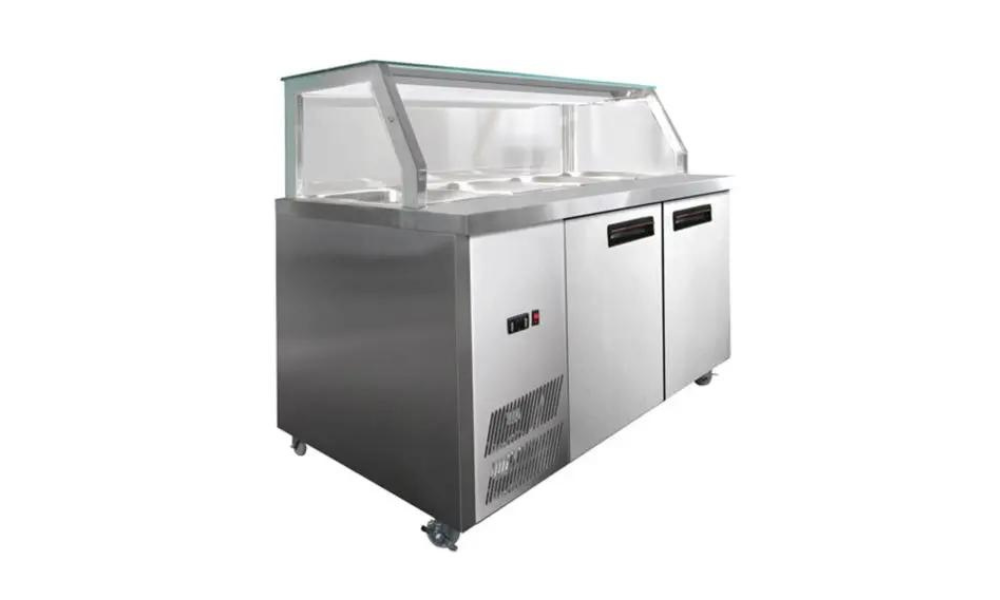Mastering the Art of Bain-Marie: A Culinary Symphony

In the world of culinary arts, precision and finesse are paramount. One technique that embodies these qualities is the Bain-Marie, a classic method that has stood the test of time in kitchens around the globe. From delicate sauces to decadent desserts, the Bain-Marie, also known as a water bath, has become an indispensable tool for chefs seeking perfection in their creations.
Origin and History
The term "Bain-Marie" has its roots in French cuisine, translating to "Mary's bath." While the technique's origin can be traced back to medieval Europe, where it was used to heat ingredients gently, it gained prominence during the Renaissance. Legend has it that Mary, the sister of Moses, discovered this cooking method, hence the name.
The Basic Concept
A Bain Marie is a cooking apparatus that uses hot water to surround a container, providing gentle and consistent heat. This indirect heating method is ideal for delicate dishes that require slow and even cooking, preventing scorching or curdling. The setup typically involves placing a container with the food to be cooked or heated into a larger pan filled with water. The water acts as a buffer, ensuring that the temperature remains steady and uniform.
Applications in Cooking
- Chocolate Tempering: One of the most common uses of the Bain-Marie is in chocolate tempering. Whether you're a pastry chef crafting exquisite truffles or a home baker dipping strawberries, the Bain-Marie offers precise control over the chocolate's temperature, resulting in a smooth, glossy finish.
- Custards and Sauces: Custards, like crème brûlée, and delicate sauces, such as hollandaise, benefit greatly from the gentle heat of a Bain-Marie. The water bath prevents overheating, curdling, or scrambling, allowing the cook to achieve the perfect texture and consistency.
- Melting Ingredients: For recipes that call for melting ingredients like butter, chocolate, or cheese, a Bain-Marie ensures a gradual and controlled process. This is particularly important when working with heat-sensitive substances that can easily burn or seize.
- Reheating: The Bain-Marie is a reliable ally when reheating leftovers or preparing dishes that require a slow, steady heat. It helps maintain the original texture and flavour of the food, avoiding the pitfalls of uneven reheating in a microwave or direct stovetop heat.
- Egg-based Desserts: Bain-Marie is a go-to method for creating creamy and silky egg-based desserts like flan, cheesecake, and bread pudding. The water bath prevents the eggs from coagulating too quickly, resulting in a velvety and luscious texture.
Tips for Using a Bain-Marie
- Water Level: Maintain an appropriate water level to ensure the desired temperature. Too much water can cause overflow, while too little may lead to rapid temperature changes.
- Covering the Container: Depending on the recipe, covering the container with a lid or foil can help regulate the heat and prevent condensation from affecting the dish.
- Stirring: Regularly stir the contents of the container to promote even heating and prevent sticking. This is crucial for recipes like custards and sauces.
- Choosing the Right Container: Opt for heat-resistant containers that can withstand the gentle heat of the water bath. Avoid using containers with lids that aren't heatproof.
- Monitoring Temperature: Use a kitchen thermometer to monitor the water temperature. Consistency is key to achieving the desired results.
In the world of culinary techniques, the Bain-Marie stands out as a timeless method that continues to be embraced by chefs of all levels. Its versatility and ability to provide a gentle and even heat make it an essential tool in creating a wide range of dishes, from sweet to savoury. Aspiring cooks and seasoned professionals alike can benefit from mastering the art of the Bain-Marie, elevating their culinary creations to new heights of perfection. So, the next time you find yourself in the kitchen, consider incorporating this classic technique and let the Bain-Marie be your culinary symphony conductor.
- Industry
- Art
- Causes
- Crafts
- Dance
- Drinks
- Film
- Fitness
- Food
- Games
- Gardening
- Health
- Home
- Literature
- Music
- Networking
- Other
- Party
- Religion
- Shopping
- Sports
- Theater
- Wellness
- News


